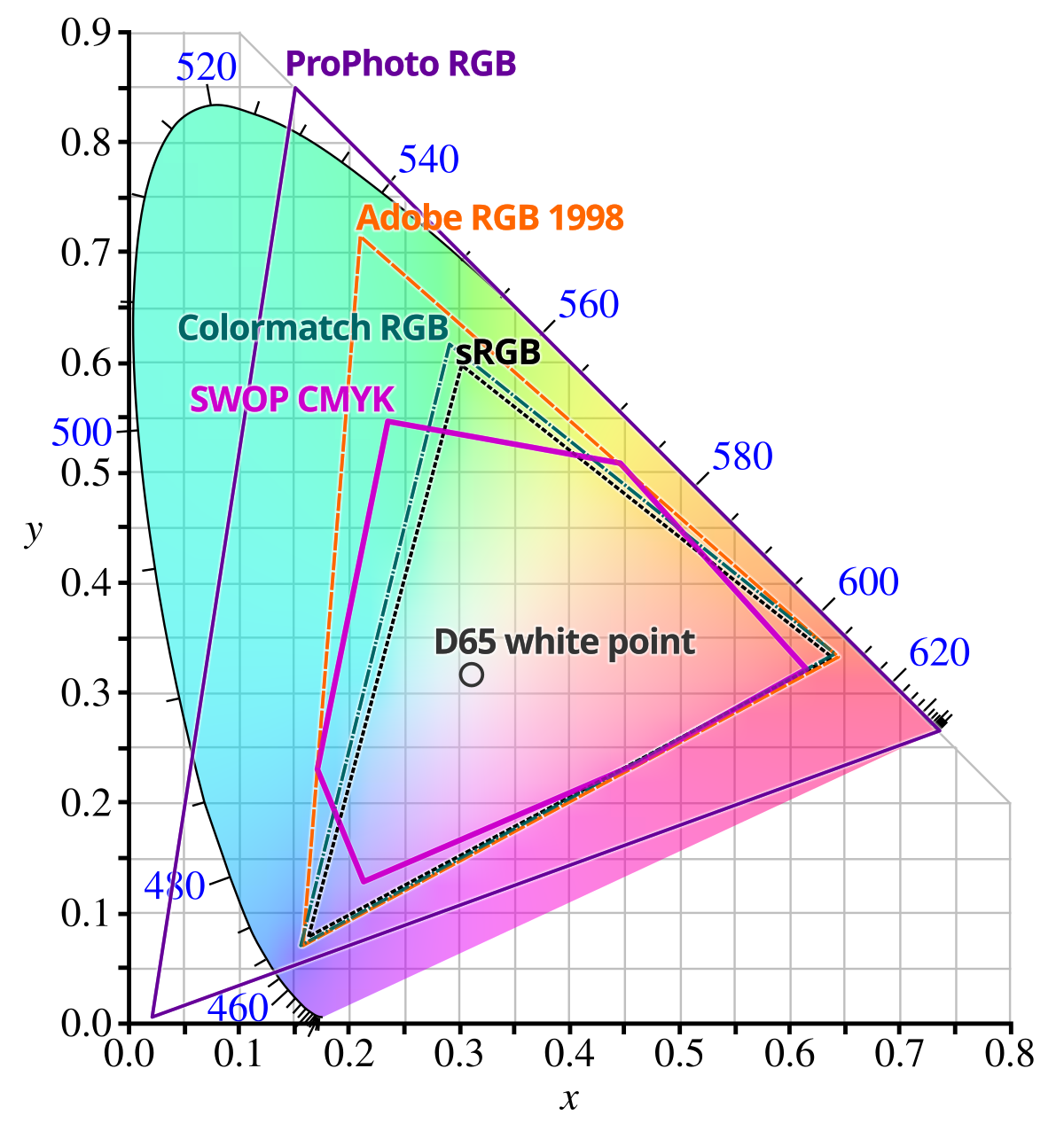Contents

Source: Wikipedia
Understanding Color Spaces
Colors are a fascinating aspect of human perception, intricately linked to the way our brain interprets signals received from our eyes. Despite the complexity in the relationship between physical light properties and perceived colors, scientists have developed systems known as color spaces to objectively quantify colors.
The Essence of Color Spaces
A color space is essentially a specific organization of colors, facilitating the reproduction and transmission of color information. Ideally, a color space would allow for each perceivable color to be uniquely identified, with measurable differences in color perception mirrored by distances within the space. Despite these ideals, practical limitations mean that no color space perfectly encompasses all perceivable colors without including non-physical, imaginary colors.
Trichromatic Vision and Three-Dimensional Color Spaces
Human vision is trichromatic, relying on three types of receptors in the eye. Consequently, most color spaces are three-dimensional, using three color coordinates to specify colors. These coordinates are often derived from primary colors, mixed either additively or subtractively, as seen in RGB and CMYK color spaces, respectively.
RGB and CMYK Color Models
RGB (Red, Green, Blue) color spaces are commonly used in digital displays where colors are created through additive mixing of light. Conversely, CMYK (Cyan, Magenta, Yellow, Black) color spaces are used in printing, relying on subtractive mixing of pigments to produce colors.
Key Color Spaces Explained
LMS Color Space
The LMS color space is based on the three types of cones in the human eye, with coordinates representing the strength of excitation of each type. This space can represent any perceivable color, although generating specific colors based on LMS coordinates is challenging due to overlapping spectral sensitivity of the cones.
CIE XYZ Color Space
Introduced by the International Commission on Illumination in 1931, the CIE XYZ color space is pivotal in color science. It uses three color coordinates with Y representing luminance, while X and Z cover chromaticity. The CIE chromaticity diagram is a visual representation of this space, illustrating the gamut of human vision.
RGB Color Spaces
RGB color spaces are vital for digital imaging and displays. The sRGB color space, developed by HP and Microsoft, is widely used due to its compatibility with standard displays. Adobe RGB offers a broader gamut, beneficial for applications needing a wider color range.
CMYK Color Spaces
In printing, CMYK color spaces are prevalent, where colors are produced through subtractive mixing of pigments. Despite their limited gamut, they are essential for accurately reproducing printed materials.
Transformations Between Color Spaces
Transforming colors between different spaces is crucial in various applications, such as converting digital images for print. However, challenges arise when target spaces cannot encompass all colors from the source space, often requiring approximations to maintain color fidelity.
Conclusion
Color spaces are indispensable tools in managing and reproducing colors across different media. While no single color space can perfectly capture all perceivable colors, understanding their structures and limitations is essential for effective color management.
As technology advances, the exploration of color spaces continues to evolve, offering new possibilities in digital imaging, display technologies, and beyond.


Source: ClarkVision.com
Feel free to comment your thoughts.



